(September 2021)
Repairing an SLS 2200 Solar Charger Powerbank
During my summer vacations, the latest member of our family - Anastashs - gave me an SLS 2200 powerbank.
"It has never worked. I'd like to see what you can do with it..."
Challenge accepted :-)
First steps - diagnosis
I know this is a solar-powered powerbank, but I can see it also has a charging port on the side. It should therefore be able to function as a normal, USB-charged powerbank.
The charging port is a classic micro-USB one - so I plug my own powerbank there, through a USB meter, and try a transfusion...
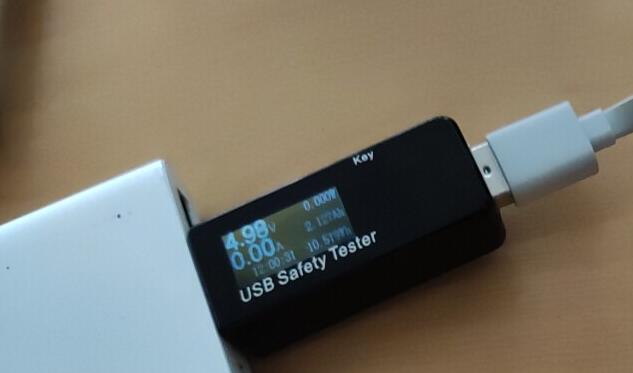
0.00 Amps... Lovely.
Absolutely zero current goes in... This powerbank is as dead as Julius Caesar.
- It could be that some wire went loose inside - and the battery is unreachable
- Or it could be that the electronics are fried
- Or the LiPo battery inside may be dead.
Only one way to find out...
Disassembly
The damn thing has no screws. It's glued together!
I hate modern-day companies' greed. No screws means 100x more difficult repairs, and the result is tons of e-waste in landfills. Many things that would be easily repaired otherwise. Sigh...
Thankfully, I have a heat gun - and a spudger.
The top-left corner is loose, so (with great difficulty) I manage to squeeze the spudger in - with the heat gun loosening the glue underneath.
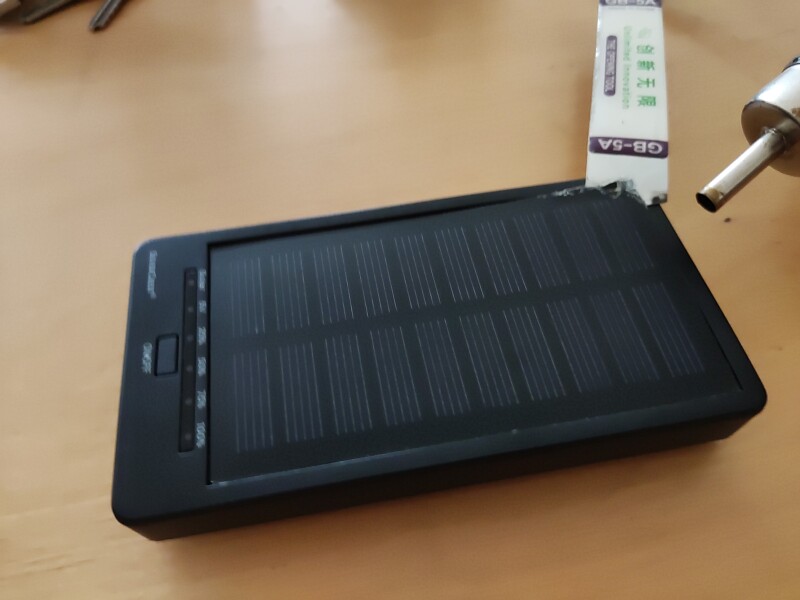
I go all around, melting the glue under the solar panel, and inserting things to hold the cracks open:
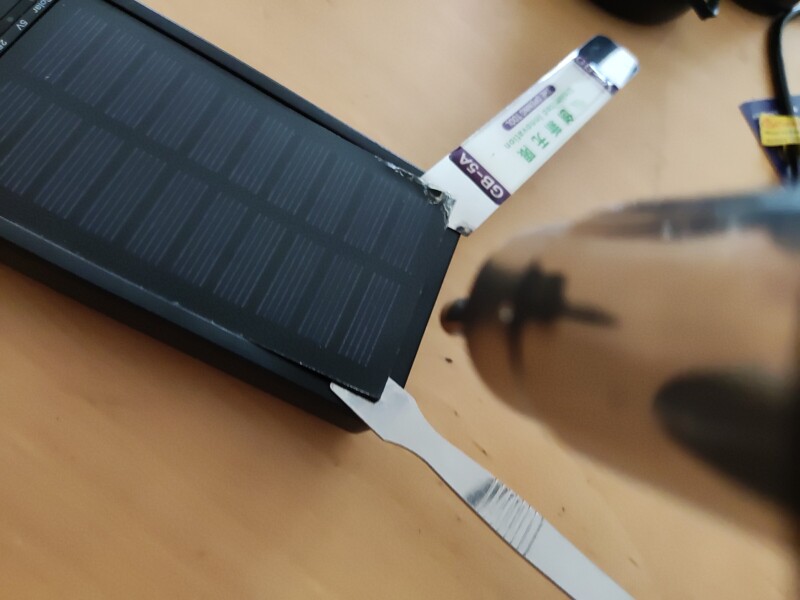
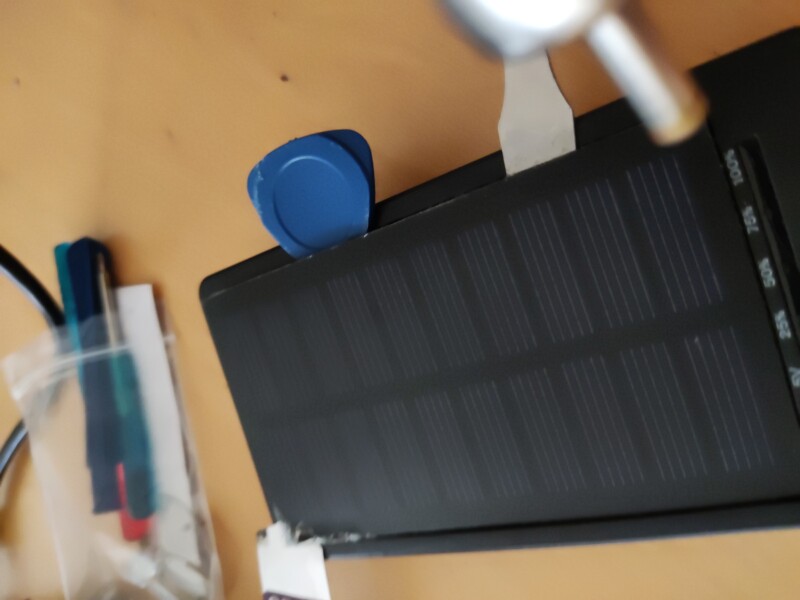
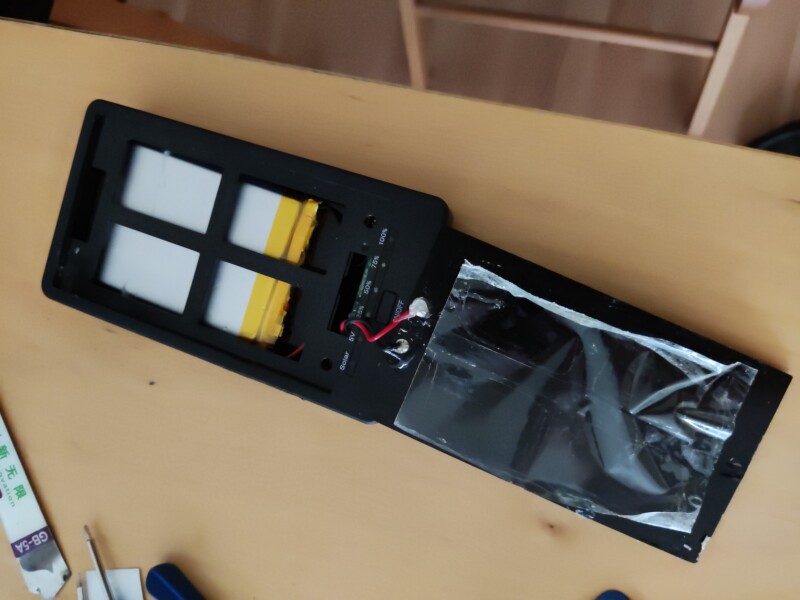
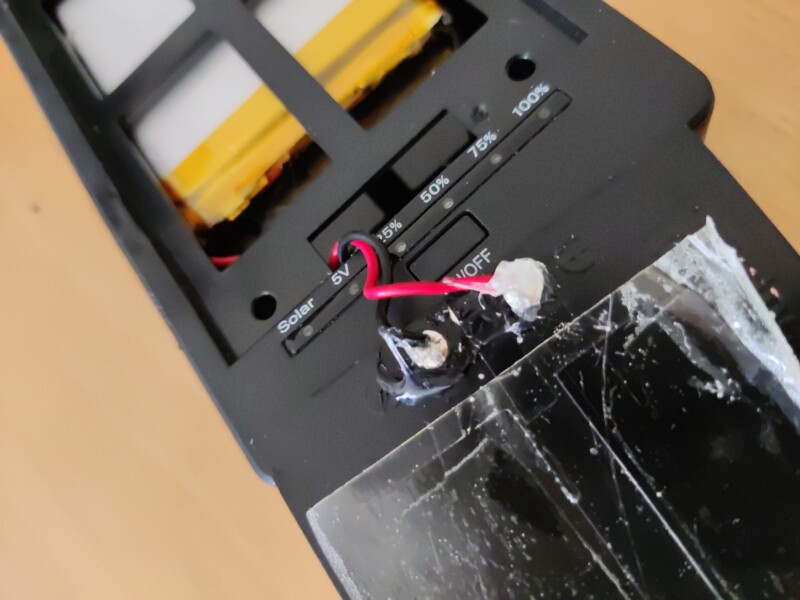
The thing is finally open.
The cables to the solar panel appear to be soldered fine (and are glued in-place for extra strength).
I lift the panel to make it look at the window, and measure the voltage it generates with my multimeter. It's not dead - it shows 1.8V. Rather low, but maybe the electronics are boosting the voltage to reach the 4.2V necessary to charge the LiPo. The point is - it's not dead.
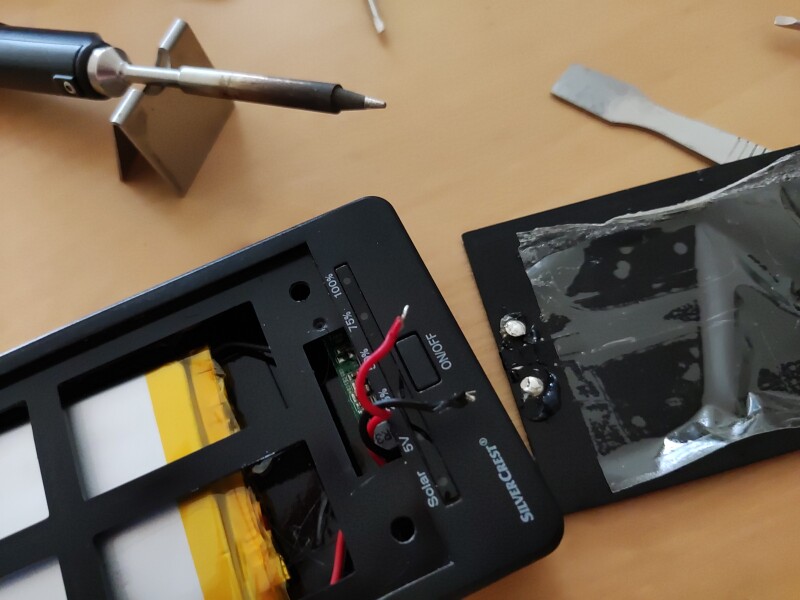
I unscrew the two screws that are now visible (inside cylindrical holes over the "Solar" and "100%" labels), and desolder the panel. I then start work on the second layer to remove - the one on top, that protects the electronics board.
Go, spudger, go!
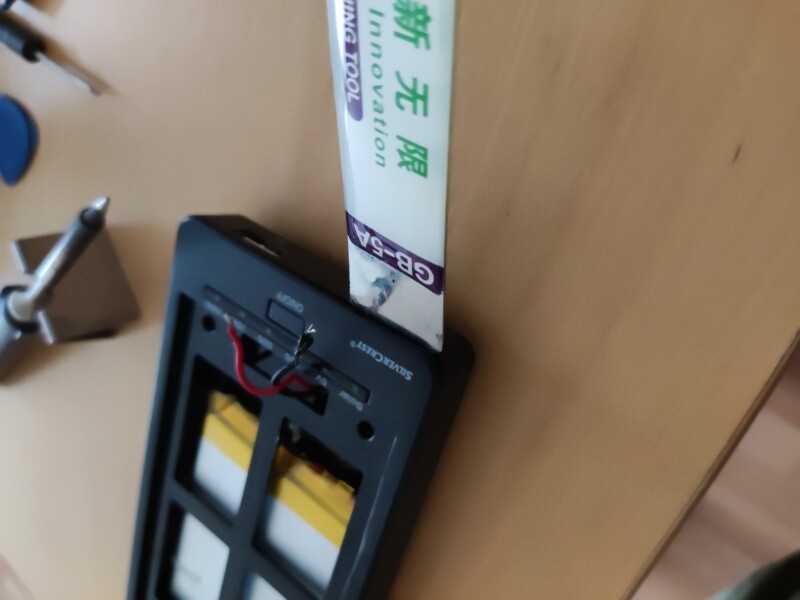
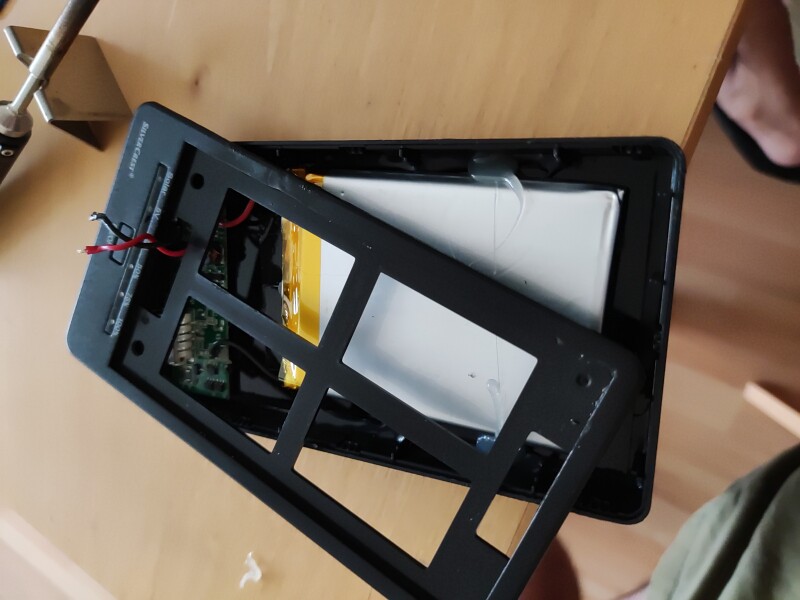
Moving all around, I unclip the hooks that keep the cover in place.
And finally, the board is visible:
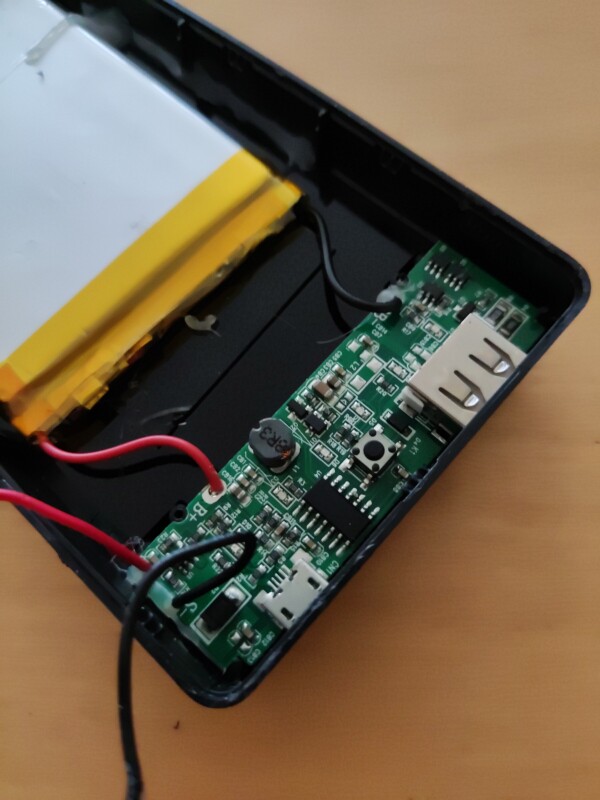
I can do far more detailed tests now.
Let's power up again via the charging port - and check the LiPo's voltage with the multimeter...
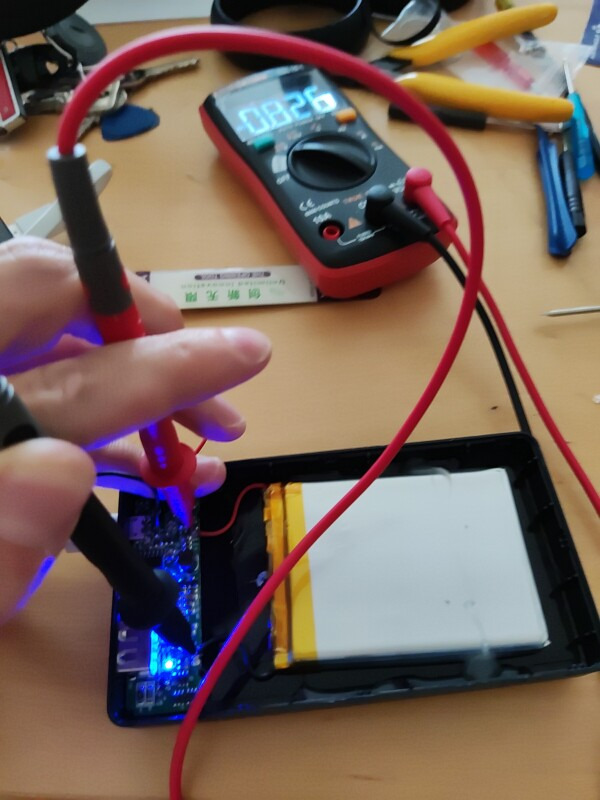
Oh God - it's 0.8V...
LiPo batteries are supposed to be held in between 4.2 (fully charged) and 3V (nominal discharge). Beyond either one of these limits, the control circuits are supposed to disconnect them.
Then again, maybe this battery has been left on its own for so long
it got completely discharged?
Or maybe the circuit itself has an issue and it is dragging it down?
I better desolder it and test things in isolation:
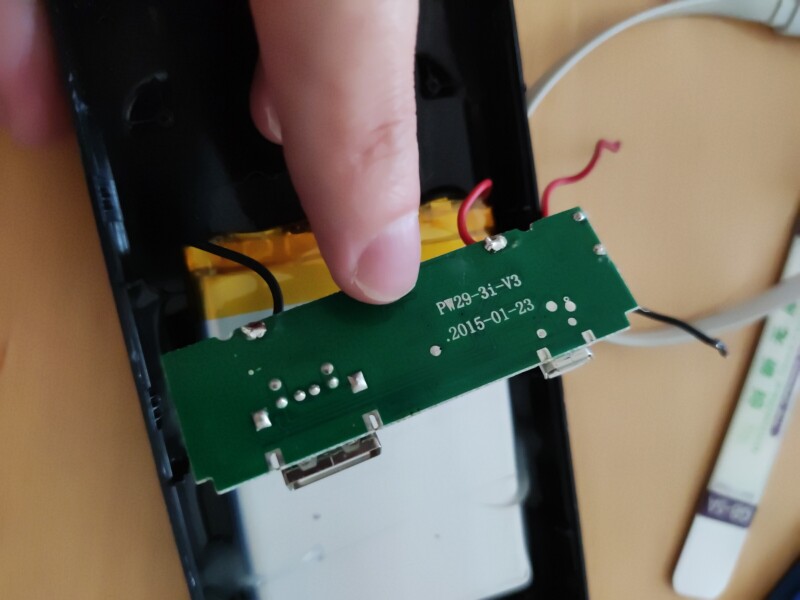
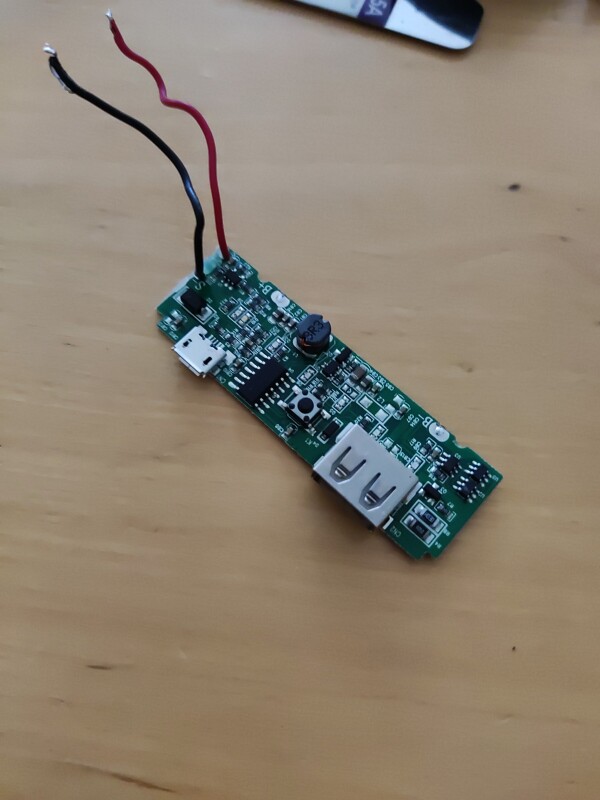
OK, the battery is at 0.8V on its own. It's almost completely flat.
As for the charging circuitry, when I power it from my powerbank and check the battery endpoints, I see 4.2V - so the electronics work! (They try to charge the connected LiPo, so they begin with 4.2V).
What is most probably happening, is that the charging circuitry detects that the battery's voltage is extremely low, and "gives up" - it probably can't recover from a battery that is so "drained".
Arise, Battery - I command you
So I connect the battery on its own, directly, to my own power supply (which is itself powered from a laptop brick). But first, I set it to 4.1V (just a bit lower than the nominal maximum) and very importantly, with a Constant Current limit of 0.1A.
The reason is that this battery is completely drained. If I connect it as-is, it will be like a man trapped in a desert for two weeks and dying of thirst, being suddenly thrown into a pool... It will "drink" too much current! (and potentially burst in flames...)
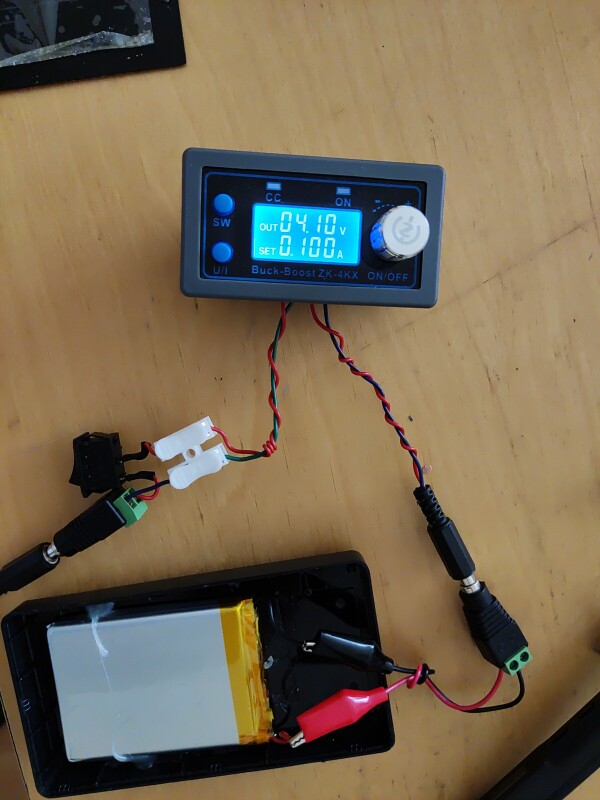
After setting the limit, I power up - and indeed, the supply limits the "thirsty" battery to just 0.1A. The voltage of the LiPo is slowly rising from the abyss towards the 4.1V.
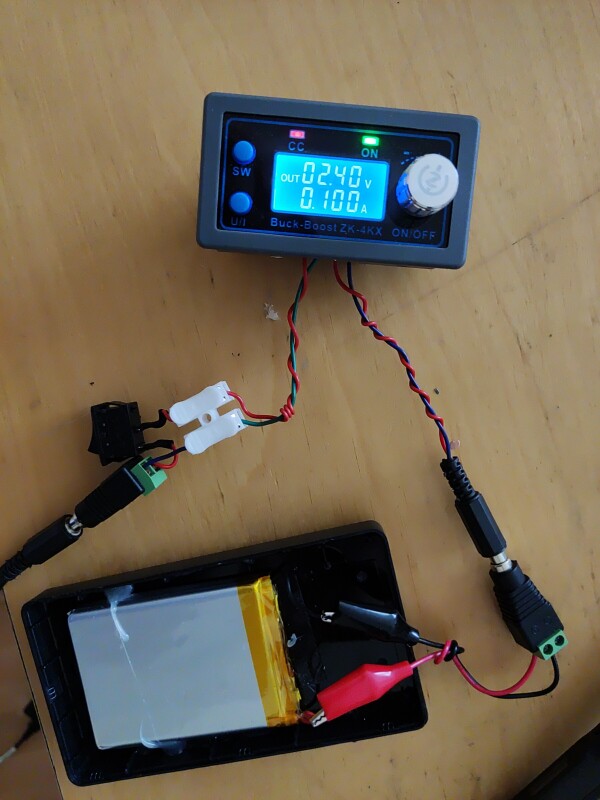
After half an hour, the voltage has risen to 3.1V - so I resolder the battery to the original circuit, and try charging again.
Woohoo! It works :-)
Current goes in - the big powerbank now charges the SLS 2200:
To verify that the powerbank is indeed repaired, I let it charge for 1h and then test it:
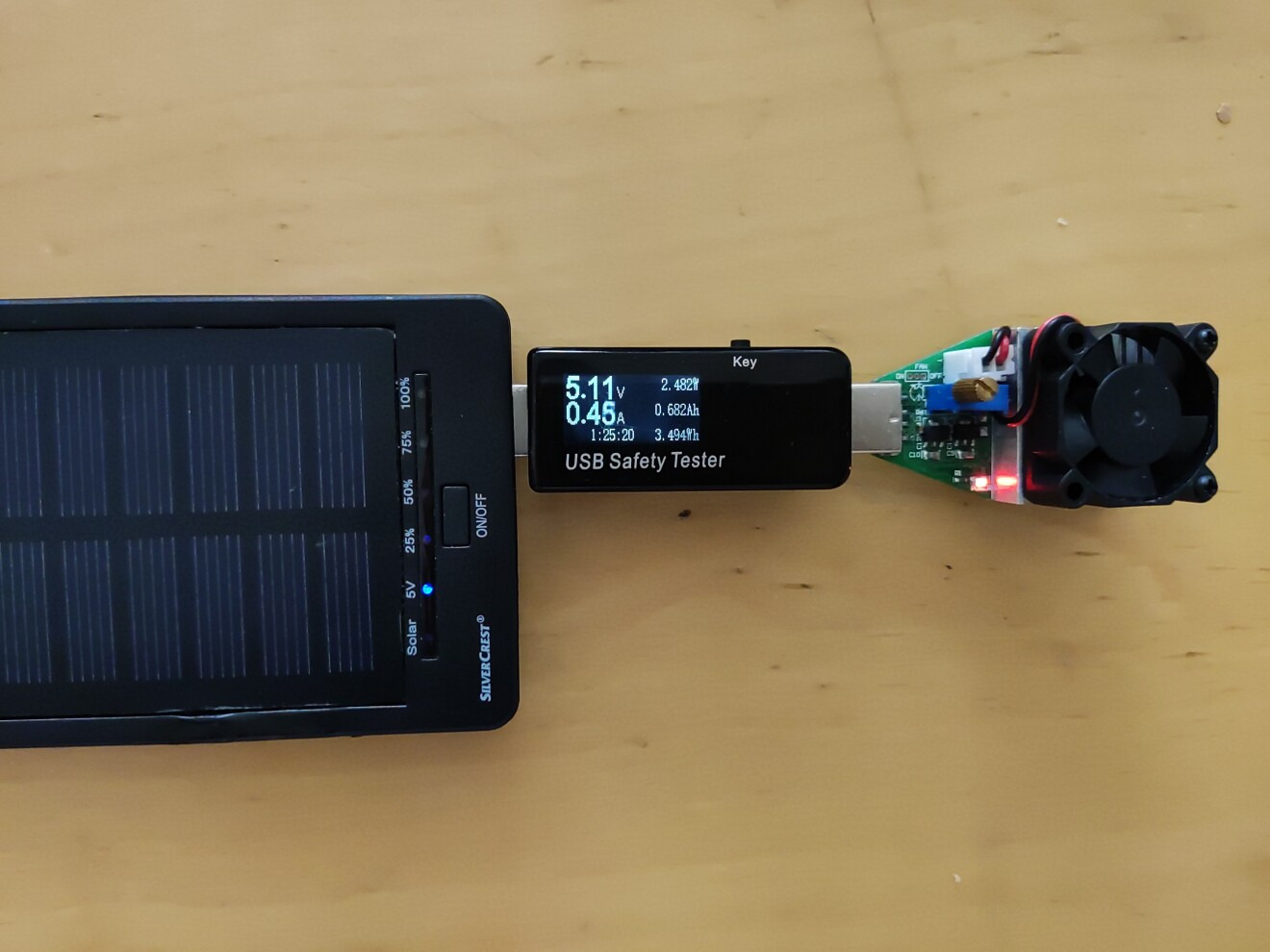
It works fine, feeding my USB test load - set to consume about half an amp.
Powerbank fixed!
Will now leave it next to the window - and see whether the solar charger helps at all in the cloudy Netherlands :-)
| Index | CV | Updated: Tue Nov 7 20:45:05 2023 |
The comments on this website require the use of JavaScript. Perhaps your browser isn't JavaScript capable; or the script is not being run for another reason. If you're interested in reading the comments or leaving a comment behind please try again with a different browser or from a different connection.

